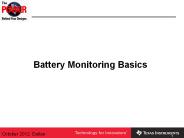Basics of Biodosimetry Part 1 - PowerPoint PPT Presentation
Title:
Basics of Biodosimetry Part 1
Description:
These curves were applied to aberration frequencies observed in lymphocytes from victims of criticality accidents; ... and in particular cancer incidence epidemiology. – PowerPoint PPT presentation
Number of Views:137
Avg rating:3.0/5.0
Title: Basics of Biodosimetry Part 1
1
Basics of BiodosimetryPart 1
- Lecture
- Module 2
2
What is Biodosimetry?
- Biodosimetry is the use of any biological
change in an irradiated person that can be
sufficiently quantified to indicate their
radiation dose
3
The ideal specification for a biological dosemeter
- Specific to radiation
- Low background
- Low donor variability
- Low doubling dose
- Dose response calibration
- Persistent effect
- Easy sampling
- Rapid result
- Cost
4
What are our options?
- For high doses
- gt2 Gy
- Prodromal nausea and vomiting
- Differential white blood cell counts
- Localised gt 3 Gy
- Erythema
- Conjunctivitis
5
Erythema and blistering
6
Changes in neutrophil numbers after irradiation
Gy
lt1
Infections, fever, death
1 - 2
2 - 5
Normal
gt5 - 6
100
of
normal
50
Critical period,infections,fever
0
180
0
45
30
15
Time, d
7
Other possible endpoints
- Altered levels of biochemicals in body fluids
- Gene mutations
- Genes up- or down-regulated
- Increased numbers of DNA double strand breaks
8
Our best options
- Cytogenetic indicators
- Dicentrics
- Translocations
- Micronuclei
- Aberrations in prematurely condensed chromosomes
9
Why do we need biodosimetry ?
- Doctors treat symptoms, not doses
- Biodosimetry can detect false positives and false
negatives - Biodosimetry can forewarn to expect later
clinical developments - Biodosimetry can indicate partial body or
inhomogeneous exposure
10
Why do we need biodosimetry?
- Dose information can inform doctors in the dose
range where medical intervention is needed - Doses lt1 Gy will need no treatment, only
counselling - False alarms, i.e., no dose, need reassurance
- Large events result in epidemiology follow-up
11
Why do we need biodosimetry?
- Physical dosemeter badges do not necessarily
reflect the wearers dose - People, sometimes members of the public, who are
not routinely monitored can be involved in
radiation events
12
Overall place of biodosimetry in radiation dose
monitoring
- It supplements, but does not replace, physical
monitoring - It works for overdoses, it does not have the
sensitivity of a badge - It resolves anomalies
- It helps quantify dose in the absence of reliable
physics - It relieves anxiety
13
Brief early history of cytogenetic dosimetry
- Early in the 20th century it was known that
radiation damages chromosomes - 1960 breakthrough method to visualize human
chromosomes in white blood cells - Calibrations at Oak Ridge, USA
- Biodosimetry performed on mid-1960s criticality
accidents in USA
14
The dicentric assay
- The first type of aberration to be used
- Most frequently still used
- Therefore a large body of experience
- Now a routine procedure
- Has been described as the biodosimetry gold
standard
15
A dicentric in a metaphase chromosome spread
16
What is the dose that we are measuring?
- Absorbed dose
- Unit is gray (Gy)
- We relate the chromosome aberration yield to dose
by reference to a dose response calibration curve
in Gy - We are measuring dose to lymphocytes
- We do NOT operate in sieverts (Sv)
17
What are the lymphocytes that we use
18
Lymphocytes
- PHA stimulates T-lymphocytes
- Lymphocytes in the blood are non-dividing
- They are a synchronised population of cells that
can be stimulated to divide and can be harvested
at first metaphase - In non-dividing cells dicentrics are
predominantly induced by radiation
19
The lymphocyte in vitro cell cycle
20
Conclusions
- This lecture has described
- Requirements for biological dosemeter
- Clinically observable effects of high doses
poorly quantitative - Best options for more quantitative dosimetry
cytogenetics - Why we need biodosimetry how it helps
- Early beginnings in 1960s with the dicentric
- Consideration of dose that we specify
- Some basic points about peripheral blood
lymphocyte































